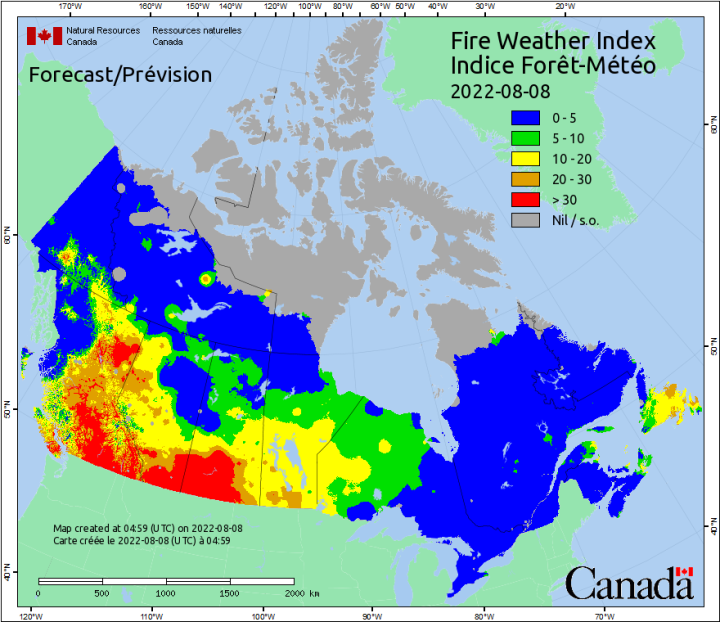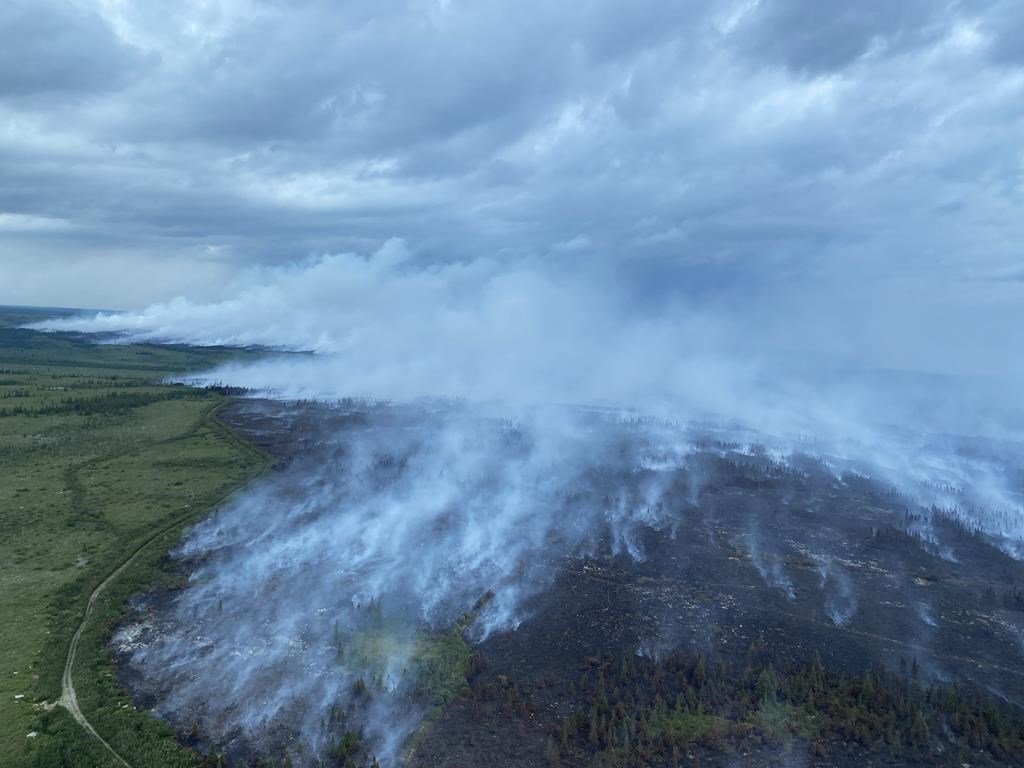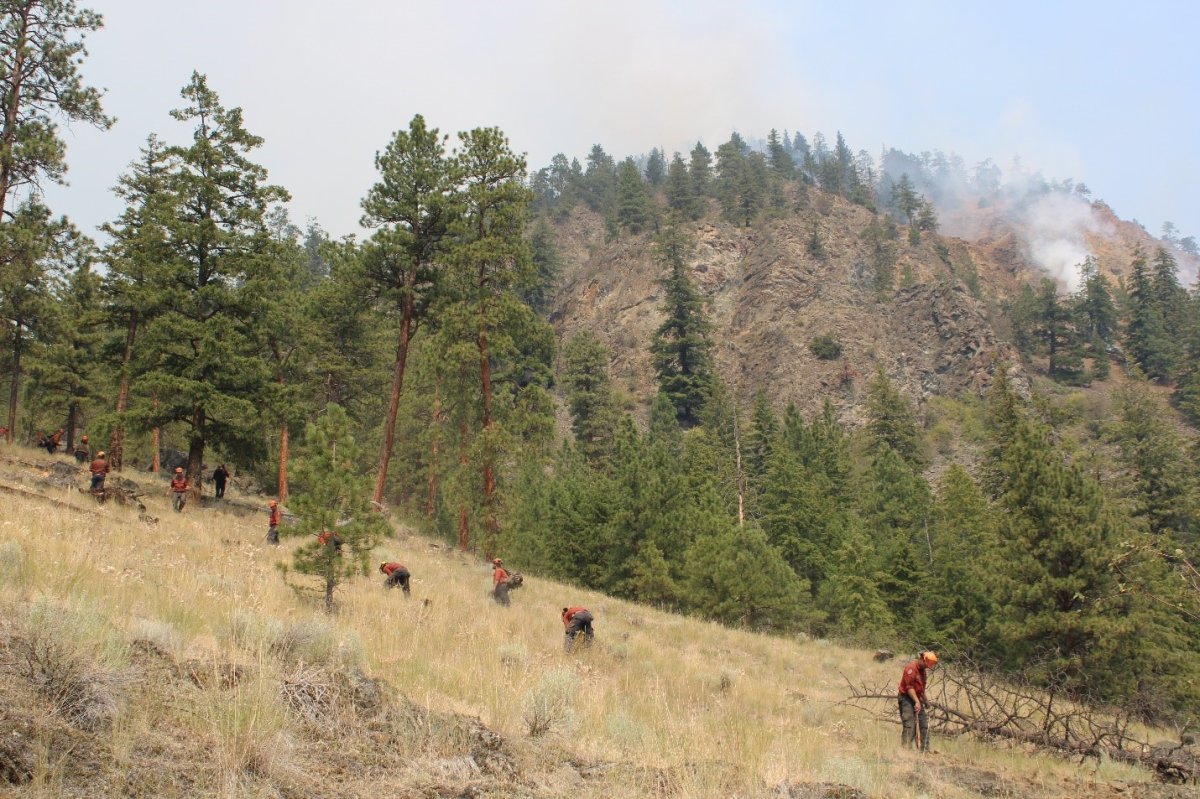Hundreds of wildfires are raging across Canada as heat warnings continue in several provinces.

The Canadian Interagency Forest Fire Centre (CIFFC) is currently at a national preparedness Level 3 with increased mobilization of resources required to support British Columbia, Manitoba, and Newfoundland and Labrador, where wildfire activity is highest.
So far this year, a total of 3,121 wildfires have been recorded in Canada, burning 1,106,771 hectares of area, according to the CIFFC.
While it has been a typical year for Western Canada in terms of the wildfire season, the situation in Atlantic Canada, particularly Newfoundland, has been unusual, said Anthony Farnell, Global News’ chief meteorologist.
“Over the last two to three weeks it has been very warm, dry and sunny, so the ingredients were there (for wildfires) in Newfoundland,” he said.
Very warm water all around the island also likely played a role, Farnell said.
Newfoundland and Labrador
A state of emergency was declared over the weekend in central Newfoundland, and a ban on open fire extended to cover the entire province.
As of the afternoon of Aug. 8, there were four active fires burning of which three were out of control, according to the latest update by the N.L. Fisheries, Forestry and Agriculture department.
All three fires of note in Paradise Lake, Bay d’Espoir Highway and Southern Lake Access Road were caused by lightning, said Jeff Motty, supervisor of forest protection for the government of Newfoundland and Labrador.
Bay d’Espoir Highway has been forced to close because of smoke management issues, he said.
Meanwhile, the size of the Paradise Lake fire increased Sunday evening from 5,392 hectares to 6,614 hectares.
“The major concerns with that one is that it reached the trigger point where we had to kind of put towns on notification that were within 25 kilometres of their municipality,” he said.
However, lower winds, temperature and higher humidity than forecasted Sunday evening meant fires didn’t grow as much as was anticipated, Motty said.
Twelve incident management teams are working on the ground to contain the situation.
The province has imported resources from Quebec, including four water bombers and one bird dog aircraft.
Going forward there is some relief coming, said Farnell, with much cooler and wetter weather forecast in the east.
“(Temperature) highs in the teens and then clouds and showers (are expected), so that should really help the situation after all the heat that’s been in Atlantic Canada,” he said.
“They’re getting some relief, so it is going to be a better pattern for any fire risk out in the Maritimes and Newfoundland.”

British Columbia
In British Columbia, 60 active fires were burning as of Monday, data from the BC Wildfire Service showed. In total, the agency has responded to 552 wildfires this year — 92 of those in the last week.
Over 31,000 hectares of area has burned so far this year, which is well below the seasonal average, said Erika Berg, B.C. wildfire information officer.
There are eight wildfires of note, four in the Kamloops Fire Centre and four in the Southeast Fire Centre. The largest, burning at Keremeos Creek, is mapped at around 5,900 hectares.
For that, evacuation orders and alerts are in place for local jurisdictions.
Evacuation alerts have also been issued for the Connell Ridge and Watching Creek fires.
B.C.’s wildfire season got off to a slow start this year because of the cool, wet conditions in spring, but hot, dry weather, especially in the south of the province, increased the activity last month before plateauing, said Berg.
“We are anticipating some increased activity this week as a result of the building temperatures and dryness … this past weekend and then continuing throughout the week, she said.
Farnell also said well above-normal temperatures and drier conditions out west for the next month will give rise to more wildfire activity in B.C.
“This is a concern for sure as we get through the heart of the summer and even into early fall,” he said.
Northwest Territories
In the Northwest Territories, there are currently 78 active fires, with one recorded in the last 24 hours, according to Mike Westwick, N.W.T wildfire information officer.
In total, this year the territory has recorded 189 fires, with 381,041 hectares of area burned. And the vast majority have been natural fires caused by lightning, said Westwick.
Authorities in the Northwest Territories are keeping a close eye on a fire on the west side of Marian Lake that flared back up after being dormant underground for a long time.
The Department of Environment and Natural Resources says the holdover fire, also known as a “zombie fire,” has grown to about 65 square kilometres and is burning about 38 kilometres southeast of Whati.
A holdover fire is one that remains dormant and undetected for a considerable time after it starts, particularly lightning-caused fires, according to the BC Wildfire Service.
At last mapping, that fire was burning at 7,356 hectares, said Westwick.
“It’s been causing significant amounts of smoke and has been highly visible to communities in the region, particularly the community of Whati.”
However, no cabins, communities or infrastructure are in danger from the blaze, he added.
“The fact is that it’s best to let these kinds of fires burn when they’re not threatening things, folks, value, because that’s just a natural part of our landscape,” said Westwick.
Researchers say so-called zombie fires, which can occur in Arctic, subarctic and northern boreal forests, may become more common because of climate change.
Authorities are also watching a wildfire located about 30 kilometres east of Tulita, which is seeing more activity because of increased winds and is causing significant smoke.
“We do expect to see fire danger climb over the next 48 hours, particularly in the north and the south slave regions,” said Westwick, based on a number of monitoring stations.
Canada’s wildfire season typically starts in April, hits its peak in July and ends in October.
Last year, the country saw a record-setting heat wave and an early start to the wildfire season with high intensity and overall numbers, particularly in B.C., where a provincial state of emergency was declared in July.
— with files from The Canadian Press










Comments